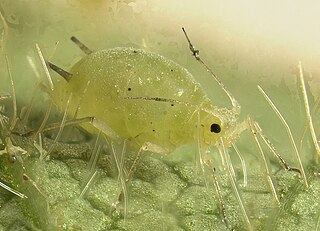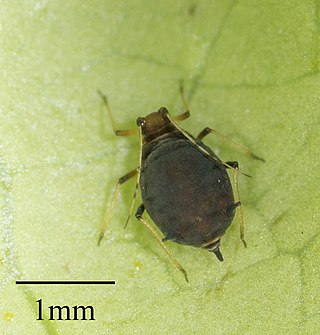Genus is a taxonomic rank used in the biological classification of living and fossil organisms as well as viruses. In the hierarchy of biological classification, genus comes above species and below family. In binomial nomenclature, the genus name forms the first part of the binomial species name for each species within the genus.

In taxonomy, binomial nomenclature, also called binominal nomenclature or binary nomenclature, is a formal system of naming species of living things by giving each a name composed of two parts, both of which use Latin grammatical forms, although they can be based on words from other languages. Such a name is called a binomial name, a binomen, binominal name, or a scientific name; more informally it is also historically called a Latin name.

Columbidae is a bird family consisting of doves and pigeons. It is the only family in the order Columbiformes. These are stout-bodied birds with short necks and short slender bills that in some species feature fleshy ceres. They primarily feed on seeds, fruits, and plants. The family occurs worldwide, but the greatest variety is in the Indomalayan and Australasian realms.

Starlings are small to medium-sized passerine birds in the family Sturnidae. The Sturnidae are named for the genus Sturnus, which in turn comes from the Latin word for starling, sturnus. Many Asian species, particularly the larger ones, are called mynas, and many African species are known as glossy starlings because of their iridescent plumage. Starlings are native to Europe, Asia, and Africa, as well as northern Australia and the islands of the tropical Pacific. Several European and Asian species have been introduced to these areas, as well as North America, Hawaii, and New Zealand, where they generally compete for habitats with native birds and are considered to be invasive species. The starling species familiar to most people in Europe and North America is the common starling, and throughout much of Asia and the Pacific, the common myna is indeed common.

The herons are long-legged, long-necked, freshwater and coastal birds in the family Ardeidae, with 72 recognised species, some of which are referred to as egrets or bitterns rather than herons. Members of the genera Botaurus and Ixobrychus are referred to as bitterns, and, together with the zigzag heron, or zigzag bittern, in the monotypic genus Zebrilus, form a monophyletic group within the Ardeidae. Egrets do not form a biologically distinct group from herons, and tend to be named differently because they are mainly white or have decorative plumes in breeding plumage. Herons, by evolutionary adaptation, have long beaks.
In biology, a monotypic taxon is a taxonomic group (taxon) that contains only one immediately subordinate taxon. A monotypic species is one that does not include subspecies or smaller, infraspecific taxa. In the case of genera, the term "unispecific" or "monospecific" is sometimes preferred. In botanical nomenclature, a monotypic genus is a genus in the special case where a genus and a single species are simultaneously described. In contrast, an oligotypic taxon contains more than one but only a very few subordinate taxa.

In zoological nomenclature, a type species is the species name with which the name of a genus or subgenus is considered to be permanently taxonomically associated, i.e., the species that contains the biological type specimen. A similar concept is used for suprageneric groups and called a type genus.
This list contains species first discovered in Hong Kong, with the endemic species asterisked.

The Aphididae are a very large insect family in the aphid superfamily (Aphidoidea), of the order Hemiptera. These insects suck the sap from plant leaves. Several thousand species are placed in this family, many of which are considered plant/crop pests. They are the family of insects containing most plant virus vectors with the green peach aphid being one of the most prevalent and indiscriminate carriers.
Citrus tristeza virus (CTV) is a viral species of the genus Closterovirus that causes the most economically damaging disease to its namesake plant genus, Citrus. The disease has led to the death of millions of Citrus trees all over the world and has rendered millions of others useless for production. Farmers in Brazil and other South American countries gave it the name "tristeza", meaning sadness in Portuguese and Spanish, referring to the devastation produced by the disease in the 1930s. The virus is transmitted most efficiently by the brown citrus aphid.
FlyBase is an online bioinformatics database and the primary repository of genetic and molecular data for the insect family Drosophilidae. For the most extensively studied species and model organism, Drosophila melanogaster, a wide range of data are presented in different formats.

Toxoptera citricida is a species of aphid known by the common names brown citrus aphid, black citrus aphid, and oriental citrus aphid. It is a pest of citrus and vector for the pathogenic plant virus citrus tristeza virus. The aphid spread the virus through citrus groves in Brazil and Venezuela in the 1970s, leading to the near destruction of the citrus industry there. This aphid was first discovered in Florida in 1995.

Coccinella transversalis, commonly known as the transverse ladybird or transverse lady beetle is a species of ladybird beetle found from India across southern and southeastern Asia to Malesia and Australia. It is not to be confused with Coccinella transversoguttata, a widespread species in Europe and North America also known as the transverse ladybird. The alternative vernacular of small transverse ladybird may be used for C. transversalis in instances where these two species are discussed together.

Zanthoxylum spinosum is a species of flowering plant in the family Rutaceae known by the common name Biscayne prickly-ash. It is native to the West Caribbean, including South Florida and the Florida Keys, Cuba, Bahamas, Cayman Islands, and Hispaniola.

Cheilomenes is a genus of ladybirds (Coccinellidae). Like other members of their subfamily they are large typical ladybirds. They are always shiny and often have bright spots on the elytra. The common African species C. lunata is an important predator of the citrus aphid, Toxoptera, and wheat aphid, while C. vicina has been suggested as a biological control agent for the cowpea aphid. Both the larvae and adults are predatory. Freshly emerged larvae consume unhatched eggs, and eventually have a dappled appearance and 6 tubercles on each abdominal segment. Vulnerable stages in the life of C. sexmaculata, including oviposition, hatching, moulting and pupation have been shown to occur after dark, probably as an adaptation to avoid exposure to natural enemies.

Toxoptera aurantii, also known as both the black citrus aphid and brown citrus aphid, is a species of aphid in the superfamily Aphidoidea in the order Hemiptera. It is a true bug and sucks sap from plants. It is known to hosts in well over 150+ plant species.
The mango aphid is a species of aphid in the superfamily Aphidoidea in the order Hemiptera. It is a true bug and feeds by sucking sap from plants.

Episyrphus viridaureus is a species of hoverfly.

Ocyptamus fuscipennis is a species of syrphid fly in the family Syrphidae. This fly can be found throughout North America, as well as in Cuba. In Puerto Rico, this species in its larval stage is an predator of autumn cohorts of Toxoptera citricida. Adult flies are known to visit Xyris tennesseensis flowers.
Pseudaspidimerus trinotatus, is a species of lady beetle found in India, Sri Lanka and Myanmar.













